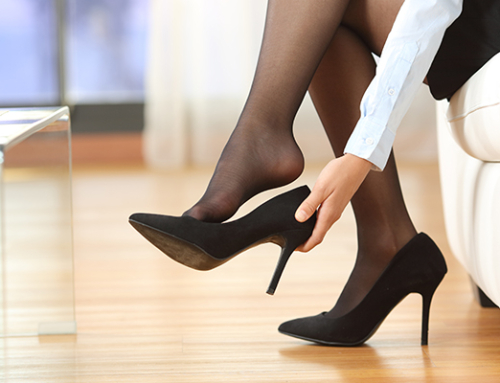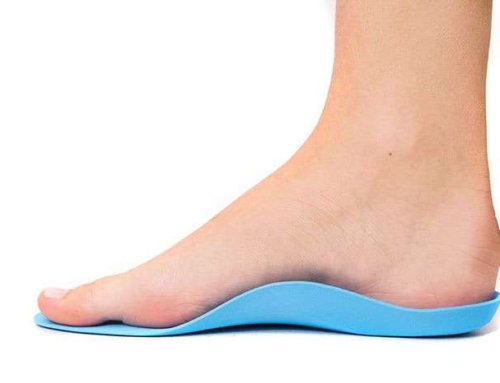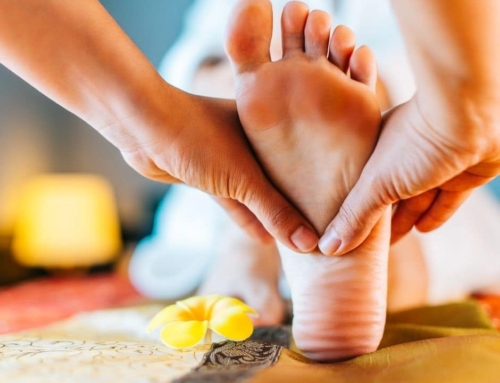Causes of foot pain when you walk and what to do about it

If your feet suddenly hut and cause you pain when you walk, you shouldn’t ignore it. While walking the roads and paths in Whitby, Oshawa or anywhere in the Toronto region, you know they are often uneven! There are several common causes, and it can take some time to discover what the underlying issue is. Pay attention to the signs your body is giving you that something isn’t right. You may need to change your habits, get different shoes, or talk to your doctor to find out what is happening and how to resolve it.
The longer you wait to take action, the worse most feet issues become. They can start to hurt more frequently and the pain can become severe. Pain in the feet when you walk can make it difficult or impossible to do your job or to take care of daily routine tasks. It can be hard to do what your family needs or to enjoy activities you once did.
Some of the common reasons for feet to hurt when you walk include:
- Arthritis
- Calluses
- Cuboid Syndrome
- Metatarsalgia
- Morton’s Neuroma
- Flat Feet
- Plantar Fasciitis
- Tarsal Tunnel Syndrome
- Tendinitis
- Turf Toe
Arthritis
There are several different types of arthritis a person can have. They can cause pain and stiffness in the muscles and the joints of the feet. There are some types that will even affect the bones in the feet adversely. The common types of arthritis that can cause pain in the feet include:
- Gout – This is the most painful type of arthritis, and it tends to affect the big toe. However, it can affect any of the toes as well as the top of the feet.
- OA (Osteoarthritis) – This often causes pain for the middle of the foot or the big toe regions.
- RA (Rheumatoid Arthritis) – This tends to be symmetrical so it will affect the same areas of both feet. This can cause the toes to hurt and to bend into abnormal positions which will remain permanent. This can eventually cause Claw Toe or Hammer Toe.
The best form of treatment depends on the type of arthritis and what is being done to treat it. If you already take medication for the diagnosis that may be enough to reduce the inflammation and the feet related issues. For others they have to take additional anti-inflammatory products orally or apply them topically. If the deformities caused by arthritis are severe, surgery may be necessary to reduce pain and make it possible to walk correctly again.
Calluses
While calluses are very common, they can be ugly and they can be annoying. They can cause a great deal of pain too because they create friction. They will rub on your shoes and they will also rub on flooring when you don’t have your shoes on. This can keep them irritated and make it harder for them to heal.
A callus is a thick layer of skin, and they are the result of friction. This is why most people get them on the bottom of the feet. They can also develop on the sides of the big and little toes. They may be hard or they may be flaky, most people will agree they are ugly and they make them feel self-conscious. The thicker they get, the more pain they will create.
Soaking your feet in Epsom salt and warm water can help to soften them up. Do this before they get thick and that will help reduce the amount of pain you experience with them. After soaking for about 30 minutes use an emery board or pumice stone to gently remove them. Don’t be too harsh or it will become tender and the pain can increase. You may have to soak and work on the callus over time rather than doing it all at once.
Make sure you wear socks so your feet aren’t on bare flooring where they can create friction. Make sure your shoes aren’t too tight as that can cause them too. A good pedicure regularly from a professional can help to reduce the risk of developing calluses.
Cuboid Syndrome
The Cuboid bone in your foot can become injured or be torn. This is common due to an accident or various types of sports related injuries. Cuboid Syndrome involves the ligaments and joints around this bone becoming inflamed. As a result, the bone is pushed out of the position where it should be.
This tends to cause pain on the outside areas along the length of the feet. The most common area of pain though is closer to the small toes. When a person walks around or puts on shoes, the pain is likely to get worse. It can result in the small toe being red and the ankle being swollen. Icing the area and taking over the counter pain relievers can help.
Metatarsalgia
When the ball of your foot becomes inflamed and causes pain, this is often due to Metatarsalgia. This is common in athletes due to the amount of running and jumping they take part in. However, it can also be the result of shoes that don’t fit properly or when someone has some type of deformity within their feet. The pain is often very sharp and the feet may feel like they are burning.
The pain is likely to get worse when you walk or when you stand for long periods of time. Many people say if feels like they have a rock in their shoe, but there isn’t anything there. Icing the ball of the foot and taking over the counter pain relievers can help with Metatarsalgia. However, the issue is likely to return if you continue engaging in the same activities. Investing in quality insoles with support and good quality shoes can make a difference.
Morton’s Neuroma
There is tissue that surrounds the nerve for the ball of the foot. It extends all the way to your toes. You may start to feel pain due to inflammation or irritation between your 3rd and 4th toes because of Morton’s Neuroma. It may be caused by nerve damage, some type of injury, or pressure from shoes that don’t fit correctly.
Many people report it feels like they have a marble they are stepping on or in their shoes when they try to walk. The pain is going to be worse when you walk and when you have shoes on than when you are bare foot and sitting. The toes may feel painful but they may also have a burning sensation or tingling. It isn’t uncommon for them to feel numb due to Morton’s Neuroma.
Taking over the counter pain medication can help to reduce the irritation. You may need to change the shoes you wear to those that offer more support. It may be necessary to put in orthotic inserts that help with the correct position of the foot and toes when you wear shoes. If the problem is severe, your doctor may have to schedule you for injections of Corticosteroids to control the pain.
Flat Feet
Some people have a condition called Flat Feet. When they stand up, their feet are flat on the ground. They don’t have arches that are developed or that developed correctly. This is often an issue that happens from birth. However, some people develop it as they get older due to the shoes they wear the activities they take part in, or an injury. Individuals who have Rheumatoid Arthritis or Diabetes Mellitus are at a higher risk of developing Flat Feet later in life.
The pain experienced with this issue can be anywhere along the bottom of the feet or at the heels. The pain can get worse when a person stands for long periods of time. It may cause the ankles to swell due to inflammation. Your doctor can recommend certain shoes and arch supports to help you become more comfortable. They can also teach you various exercises to stretch the feet and reduce pain.
Plantar Fasciitis
When the Plantar Fascia becomes inflamed, it is going to cause this particular condition for the feet. If you aren’t familiar with it, this is a band of tissues that is found along the length of your feet. It is very thick and it is on the bottom of your feet. If this is the underlying cause, you will likely feel sharp stabbing pain at the heel of the feet when you take steps.
For most people, this happens first thing in the morning when they get out of bed. The areas is tight and that is why it happens then most of the time. If you sit for long periods of time throughout the day, you may experience those same types of pains when you do stand up to move around. As you move more, you will start to feel better and the pain will diminish.
However, most people find if they exercise the pain gets worse. This makes it difficult for them to stay mobile and to stay in shape. It can also make it more difficult to maintain a healthy body weight. Low impact types of exercise such as swimming can be a good alternative.
To reduce the pain from Plantar Fascia, apply ice to the heels several times a day, especially when you get up and when you sit for long periods. Try to get up and walk around every couple of hours to prevent the pain from returning. Taking over the counter pain medications can help. If the pain is severe or it lingers for a long time, your doctor may recommend physical therapy or ask you to wear splints on the feet.
Tarsal Tunnel Syndrome
There is a nerve located inside of the Tarsal Tunnel, called the Posterior Tibial nerve. This is a very narrow passage and it located in the ankle and the bones that surround it. There are ligaments in there that help to connect all of them together. With Tarsal Tunnel Syndrome, also referred to as TTS, that nerve is being compressed.
Due to this nerve compression, a person may experience numbness, tingling, burning, or various levels of pain. The pain can affect the ankle but it can also move up to the calf region. It tends to be worse when someone is active. Taking over the counter pain relievers can help reduce the pain. Your doctor may recommend you wear a splint or brace if you have to stay moving for work or other activities. You may have to get injections of Corticosteroid if the pain lingers or it is quite severe.
Tendinitis
A very common reason for pain in the feet when you walk is the result of an inflamed tendon. The severity of the pain depends on the location of it. Typically the pain will be worse with additional movement throughout the day.
This is referred to as Tendinitis, and there are several different types that fall under this umbrella. They include:
- Achilles Tendinitis – Creates pain around the back of the heel region and the Achilles tendon.
- Extensor Tendinitis – This causes pain around the middle area of the foot, but on the top of it rather than the bottom.
- Peroneal Tendinitis – Creates pain around the outside areas along the sides of the feet.
Try to rest your feet as often as you can if you have Tendinitis to give the tendons a chance to heal. Icing the area can help to reduce the pain and stiffness. You may need to take over the counter pain medications to help control the pain. If the pain is severe or the issue lingers for a long time, you may need to explore other treatment options with your doctor.
This can include physical therapy or going in at regular intervals for injections of Corticosteroids. In the worst cases, surgery may be necessary to offer some relief. However, that is typically reserved for the most difficult cases when nothing else has helped to reduce the pain.
Turf Toe
It is possible to sprain your big toe, and it is going to hurt quite a bit! This is called Turf Toe, and it happens when the big toe is bent too far forward. It often happens to athletes when they play on artificial turf but it can also be the result of other types of accidents and traumas. The area will become swollen and painful, and it is difficult to move the big toe on its own.
The problem can get worse and worse if you don’t take it easy. Ice can help to reduce the pain and swelling. Taking over the counter pain medications can help with controlling the pain. Avoid sports and other activities that can put additional strain on the big toe while it is healing.
Talk to your Doctor
We tend to take walking for granted until we have issues such as pain in our feet when we try to do so. Talk to your Podiatrist or Chiropodist, like me! Let us know what is taking place. We can complete an assessment and help you find the underlying cause. We can also help you find the best treatment so you can control your pain in the feet and get back to enjoying life to the fullest again!
Sometimes, it is as simple as cutting down on how much you walk each day or getting shoes with support. In other instances though, there is an injury you weren’t aware of or some type of medical diagnosis that is creating that pain in the feet. Don’t suffer day after day, make an appointment with a professional and get it all figured out!
Do what you can on your own with ice, pain relievers, and staying off your feet. If you find the issue doesn’t get better after a week or two, make an appointment. If the pain is severe enough you can’t walk, you have trouble sleeping, or you can’t do routine tasks though you should be seen right away.
Talk to your doctor if you experience sharp pains, numbness, or tingling in the feet. If you have diabetes, any type of foot pain should be addressed by your doctor immediately. If you can’t get in to see your doctor, go to an emergency room if you can’t put any weight on the foot or you can’t walk easily. If you have a fever, an open wood, or the feet feel warm you need to seek immediately medical care.





